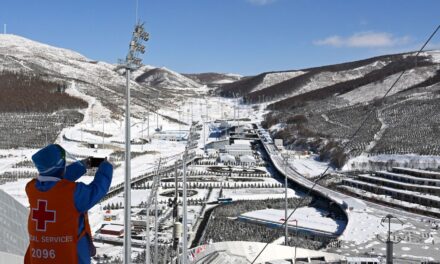
How easy is it to buy and restore an aging countryside home in Japan?

Tokyo (CNN) — Near the town of Fujino, off busy Route 20, just 65 kilometers west of Tokyo, sits a narrow, single-lane tunnel.
Passing through it, the modern incarnation of Japan seems to disappear as travelers emerge into cedar forests and twisting mountain roads that lead deeper into an even less-forgiving side of rural Japan.
Free of gas stations or convenience stores, a few houses dot the roadside or perch on hilltops, accessible only through tiny tracks. Usually, only hikers heading to or from Mount Jinba or weekend cyclists provide any sign of human life.
It’s in this forested landscape, where life moves in step with the seasons, that Shuji Kikuchi decided to do what many dream of: buy and restore a century-old wooden house and create a weekend home in the Japanese countryside.
“Nakamaru,” as he and his partner have named it, has taken seven years to create. The property is overlooked by Kikuchi’s own tea plant-covered hillside and separated from a few neighbors by a picturesque stream and bridge.
Just over an hour from the heart of Tokyo, it’s a rural oasis but also a labor of love.
‘It’s like having an old car, there’s always something to work on to keep it going,” says Kikuchi.

The entrance to Shuji Kikuchi’s countryside holiday home.
Dean Irvine
The Tokyo resident spent five years searching the local area for an affordable old property to buy and restore with the craftmanship and character missing from modern Japanese homes. (It took the roof collapsing under a particularly heavy snowfall to prompt Nakamaru’s elderly former owner to sell in 2014.)
Walls were erected in the place of the traditional “shoji” screens that once separated rooms. Insulation — not common even in modern Japanese homes — was added under the floors to cope with bitterly cold winter months. The “doma” entrance was restored to become a welcoming space. A self-contained second floor was added for long-stay house guests.
“I had a plan in mind as soon as I saw it and I didn’t change too much from it in terms of the big picture,” says Kikuchi. “But the small details changed a lot. It was a series of never-ending smaller projects.”
The idea to install a marble floor in the kitchen by himself went from dream to nightmare. It cracked as soon as it was laid. Thankfully Kikuchi’s partner — a professional chef — took over and transformed it into something both stylish and functional, a place they could prepare feasts for frequent weekend visitors.
Japan’s housing market is open to foreigners
Many others — foreigners included — hope to emulate Kikuchi’s success story.
Non-Japanese nationals can buy property in the country. Residency status is not needed and there are plenty of real estate agents catering to foreign buyers.
Most properties in Japan’s “inaka” (countryside) are not like Nakamaru, which sits on a particularly special plot of land, but vacant houses are plentiful, cheap and sometimes even free.
Japan’s aging population and a lack of employment opportunities in the countryside have created a glut of millions of unoccupied homes, known as “akiya.”
Though they present an opportunity for bargain hunters, they’ve created a problem for local authorities and disintegrating countryside communities because empty homes bring down both desirability and property prices.
Japan’s Housing and Land Survey in 2018 counted 8.76 million unoccupied houses and the number is set to increase. Many local authorities have websites showing the unoccupied homes for sale to try to stimulate interest and sales.
But for anyone looking for a piece of the country’s rural heartland it pays to enter with an element of “buyer beware,” according to Parker Allen of real estate consultancy Akiya & Inaka, which helps foreign buyers looking to purchase property in the countryside.
“Land is the value, not the house,” he says.
“With a place that is 3 million yen ($25,900) you often need another 5 million yen to get it habitable. The best deals are on existing structures with minimal renovation. The existing structure is the thing that causes the unforeseen problems.”
Also, not all of Japan’s countryside is seen as equal. Hotspots are within two hours of Tokyo or Osaka, making them accessible weekend boltholes.
Complications, especially for foreign buyers, tend to arise when trying to secure loans and navigating local regulations around individual properties. Some rules require the home to be inhabited full time, restrict changes to existing structures or come with farmland that requires active use.
Owning a piece of Japanese history

Tom Fay hopes to complete renovations of his Kyoto farmhouse in 2022.
Tom Fay
Tom Fay, an Osaka-based British writer and teacher, has overcome a number of hurdles in the last year as part of his own project — renovation of a 100-year-old 180 square-meter farmhouse in Kyoto prefecture.
The cost of the house? Around 7 million yen (approx. $60,000), including fees.
“It looks wild as it’s up a winding lane with woods on three sides,” he says. “But it’s not as wild as it looks; It’s also quite close to amenities like a supermarket and train station, too.”
After two years of searching for the right property, it took another five months of multiple rejections to secure a loan.
What propelled him through the tangle of regulations was a desire to live closer to nature — more in keeping with his rural Welsh upbringing — and owning a piece of Japanese history.
Inside, the house was part treasure trove, part time capsule when Fay finally became the owner. A calendar from 1958 was still hanging on the wall.
Fay hopes to be able to move into the house later in 2022.

Chrstopher Flechtner’s traditional Kyoto townhouse.
Christopher Flechtner
In nearby Kyoto City, industrial designer Christopher Flechtner took the best part of two years to transform a traditional machiya townhouse in the city’s Gosho district into a stylish modern home for his young family.
“The bones of the house were kept and as long as we didn’t change square-meters we could do whatever we wanted,” he says.
The result is a modern interior space with natural light, insulation, soundproofing and many of his own design touches.
“The design is focused on entertaining. There’s always a surprise with these old homes but the builders’ insight helped us.”
There are dozens of machiya townhouses on the market in Kyoto City. As with all real estate, prices vary dramatically depending on the state of the home, location and size.
Companies such as Hachise assist foreigners looking to buy townhouses, offering both renovated and unrenovated properties.
A search of their current listings shows machiya ranging in price from 8.8 million yen (about $76,000) for a small unrenovated townhouse, up to 550 million yen ($4.7 million) for a series of four renovated machiya that can be operated as lodges.
Revitalizing local communities
While financially within reach for many, Japan, however, does not have a culture of owning second-homes — around 0.65% of the population owns a second property, according to a survey by the Japanese government.
Gen Fukushima and his business partner Hilo Homma want that to change.
Their recent venture Sanu offers a version of second-home ownership through a 55,000 yen per month (US$477) subscription service to modern, locally sourced wood cabins located within sight of Mount Fuji and within a few hours of Tokyo.
“Young people go abroad if they can and the idea of moving to a local (countryside) place is impossible. Unlike countries like Sweden, that have a similar amount of space to Japan, having a second home is seen as being only for the very rich and secretive,” says Fukushima.
The Covid pandemic has many reconsidering their relationship to offices and city living. Fukushima also wants to help those who sign up with Sanu to build a relationship with local rural areas, sometimes referred to as “kankei jinko,” to help revitalize local businesses and communities.
“For that to happen, places need to have soft services, like coffee shops, bakeries and organic stores to entice younger urban people to visit and spend time,” he says.
The location of Kikuchi’s holiday home, tiny Fujino, has elements that already make it an attractive proposition to those stepping into country life. As well as its easy access to the capital, an “art village” and even a Steiner school mark it out as something different from most rural towns.
Years after Kikuchi established himself in the community, he still faces the foibles of local life: trees hanging over their property being cut down without consultation or having to join regular local activities, like road cleaning.
But after the heavy-lift of a rebuild, overhanging branches and litter picking seem a small price to pay for a beautiful piece of history and tranquility.
Source: https://www.cnn.com/travel/article/japan-cheap-houses-renovations/index.html
















